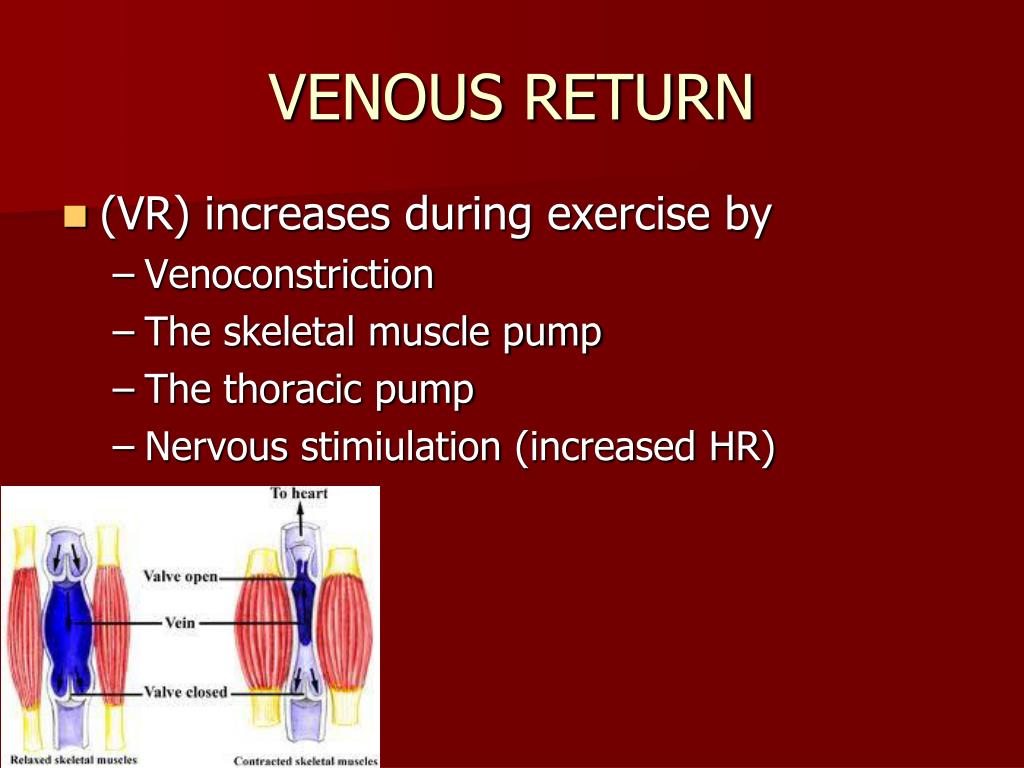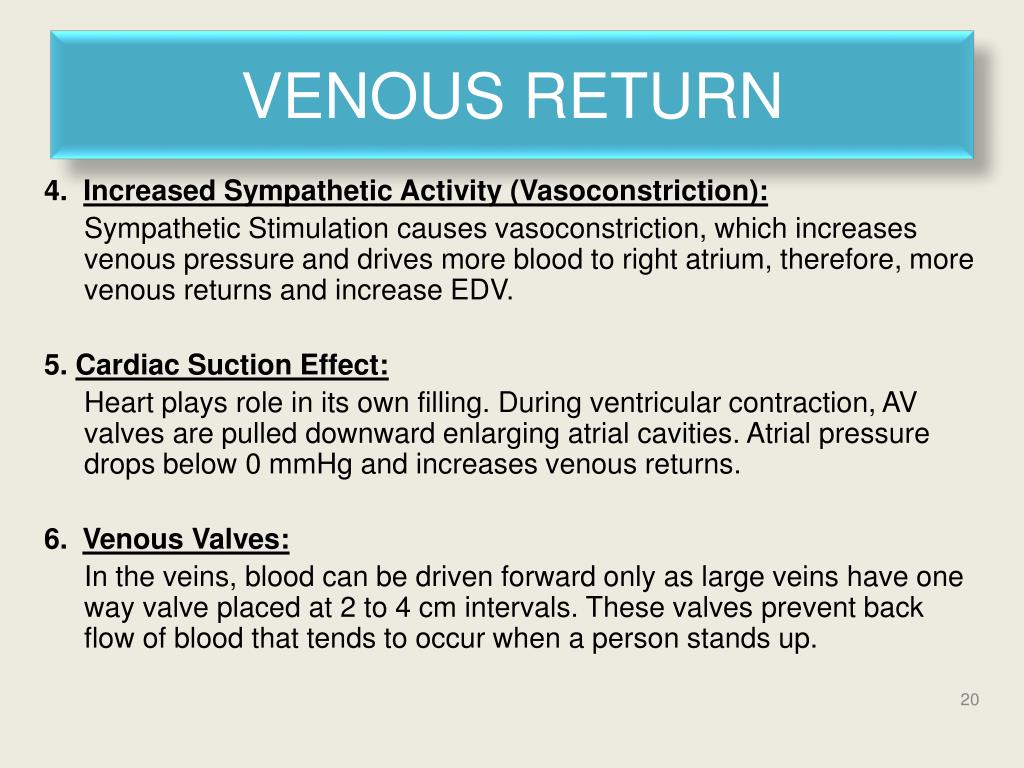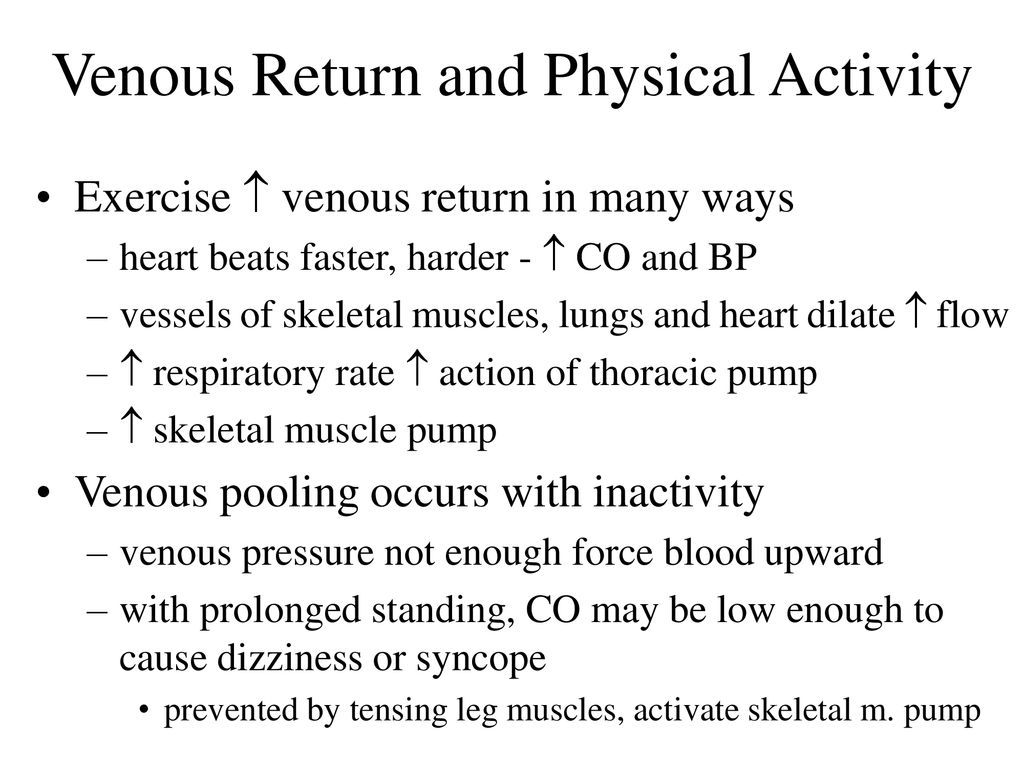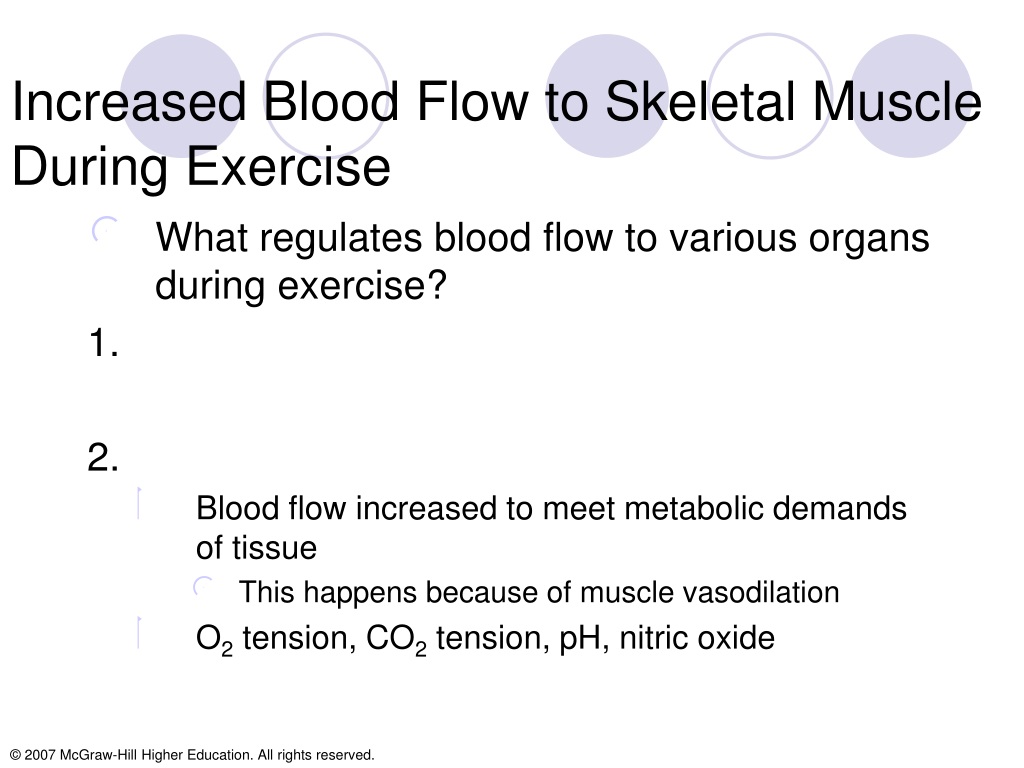Choose All The Reasons Venous Return Increases During Exercise

For anyone who's ever felt their heart pounding during a workout, or noticed veins bulging in their forearms after lifting weights, the physiological changes occurring within the cardiovascular system are both powerful and complex. One crucial aspect of this process is increased venous return, the flow of blood back to the heart. Understanding the mechanisms behind this increase is vital for optimizing athletic performance, managing certain medical conditions, and even comprehending the fundamental workings of the human body.
Venous return – the rate at which blood flows back to the heart from the systemic circulation – is not a passive process. It is significantly enhanced during exercise due to a combination of factors. These factors include the skeletal muscle pump, the respiratory pump, venoconstriction, and the increased blood volume returning to the heart after being pushed out during systole. Together, these mechanisms collaborate to ensure that the heart receives an adequate supply of blood to meet the increased demands of working muscles.
The Skeletal Muscle Pump: Powering Circulation
Perhaps the most recognizable contributor to increased venous return during exercise is the skeletal muscle pump. As muscles contract, they compress the veins running through them. These veins contain one-way valves, ensuring that blood flows only towards the heart and not backwards.
Imagine squeezing a tube of toothpaste: the toothpaste moves in the direction of the opening. Similarly, each muscle contraction propels blood towards the heart. This effect is especially pronounced in the legs during activities like running or cycling.
The rhythmic contraction and relaxation of leg muscles during exercise is a powerful force that actively pumps blood back up against gravity. This prevents blood from pooling in the lower extremities and keeps it moving towards the heart.
The Respiratory Pump: Breathing and Blood Flow
The respiratory pump, driven by changes in intrathoracic pressure during breathing, also plays a significant role. During inhalation, the pressure within the chest cavity decreases, creating a vacuum effect that draws blood into the vena cava (the large vein carrying blood to the heart) and right atrium.
Conversely, during exhalation, the pressure increases, gently squeezing the vena cava and propelling blood forward. This alternating pressure gradient assists in venous return.
Deep, rapid breathing during exercise further amplifies this effect. The increased depth and rate of breathing creates even greater fluctuations in intrathoracic pressure, resulting in a more powerful suction effect on the veins.
Venoconstriction: Squeezing the Veins
Another crucial factor is venoconstriction, the narrowing of the veins. During exercise, the sympathetic nervous system activates, causing smooth muscle surrounding the veins to contract.
This constriction reduces the volume of the venous reservoir and increases venous pressure, effectively pushing blood towards the heart. Think of it as squeezing a water balloon – the pressure inside increases, forcing water out.
Venoconstriction is particularly important in mobilizing blood from the splanchnic circulation (the blood vessels supplying the abdominal organs) to meet the increased demands of the working muscles. This redirection of blood flow ensures that muscles have an adequate oxygen supply.
Increased Blood Volume after Systole
Finally, the heart itself contributes to venous return through its pumping action. The emptying of the heart during systole creates a pressure gradient that favors the inflow of blood during diastole (the relaxation phase).
As the heart ejects blood into the arterial system, it creates a "space" for more blood to return. The stronger the contraction of the heart, the more blood that is ejected, the more space is created, and the greater the drive for venous return.
In essence, the heart is a self-regulating pump: the more it pumps out, the more it attracts blood back in. This ensures continuous and efficient circulation.
Implications and Clinical Relevance
Understanding the mechanisms behind increased venous return has important implications for both athletic training and clinical medicine. Athletes can use this knowledge to optimize their training regimens and improve performance.
For example, exercises that involve dynamic movements and large muscle groups, such as running or swimming, are particularly effective at promoting venous return. Moreover, proper breathing techniques can also enhance venous return during exercise.
Clinically, impairments in venous return can lead to conditions such as edema (swelling), orthostatic hypotension (a drop in blood pressure upon standing), and even heart failure. Understanding the underlying mechanisms can help healthcare professionals diagnose and treat these conditions more effectively. Furthermore, promoting activities that enhance venous return, like walking and leg exercises, can be valuable in managing these conditions.
The Future of Research
Future research may focus on further elucidating the complex interplay between these mechanisms and identifying novel strategies to enhance venous return in both healthy individuals and those with cardiovascular disease. Advances in technology, such as wearable sensors and non-invasive imaging techniques, may enable more precise monitoring and manipulation of venous return.
Researchers are also exploring the potential of pharmacological interventions to enhance venoconstriction and improve venous return in patients with heart failure. One thing that seems clear is that an improved comprehension of venous return and its regulatory mechanisms is critical to promoting overall cardiovascular health.
Ultimately, understanding why venous return increases during exercise offers valuable insights into the remarkable adaptability of the human body. It highlights the intricate coordination of multiple physiological systems to meet the demands of physical activity. It also points to possibilities for promoting both athletic performance and overall cardiovascular health.


















